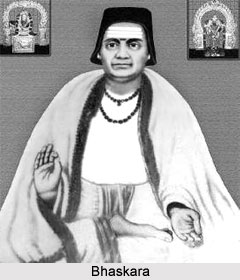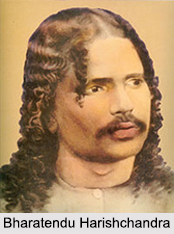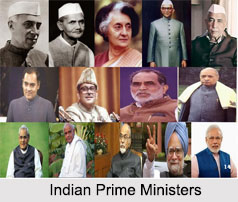 Bhaskara I who has been dated back in 550-628AD has been the one of the astronomers who again belonged to the southern part of India who had his pioneering contribution ion tracing out the longitudes and latitudes which are the in visible lines around the Earth which decides the motion of the earth within itself. Bhaskara I is popularly known for his three books or volumes on Hindu astronomy which are named as Mahabhaskariya( the Great Book Of Bhaskara), Laghubhaskaraiya ( the smaller version or book of Bhaskara) and Aryabhatiyabhashya - a commentary on Aryabhatiya, the book written by Aryabhata. Among this Mahabhaskariya is an elaborate version of three astronomical chapters of Aryabhatiya which has been arranged within eight chapters which include Mean longitude of planets and indeterminate analysis (kuttaka); Longitude correction; time, place and direction, spherical trigonometry; latitudes and longitudes of junction-stars; True longitudes of planets; Solar and lunar eclipses; Rising, setting and conjunction of planets; Astronomical constants; and tithi and miscellaneous examples. It has often been considered as the innovative work of the author.
Bhaskara I who has been dated back in 550-628AD has been the one of the astronomers who again belonged to the southern part of India who had his pioneering contribution ion tracing out the longitudes and latitudes which are the in visible lines around the Earth which decides the motion of the earth within itself. Bhaskara I is popularly known for his three books or volumes on Hindu astronomy which are named as Mahabhaskariya( the Great Book Of Bhaskara), Laghubhaskaraiya ( the smaller version or book of Bhaskara) and Aryabhatiyabhashya - a commentary on Aryabhatiya, the book written by Aryabhata. Among this Mahabhaskariya is an elaborate version of three astronomical chapters of Aryabhatiya which has been arranged within eight chapters which include Mean longitude of planets and indeterminate analysis (kuttaka); Longitude correction; time, place and direction, spherical trigonometry; latitudes and longitudes of junction-stars; True longitudes of planets; Solar and lunar eclipses; Rising, setting and conjunction of planets; Astronomical constants; and tithi and miscellaneous examples. It has often been considered as the innovative work of the author.
Bhaskara I then take up his second book which is named as Laghubhaskaraiya which is the abridged version of author`s earlier work. His third book includes his version of Aryabhatiya which has come out very popularly in the south and which includes the verses and quotations of the original text.
Thus the works of Bhaskar I is regarded with honour in among the Ancient Hindu Astronomy which has been widely referred in the south of Indian Subcontinent.






